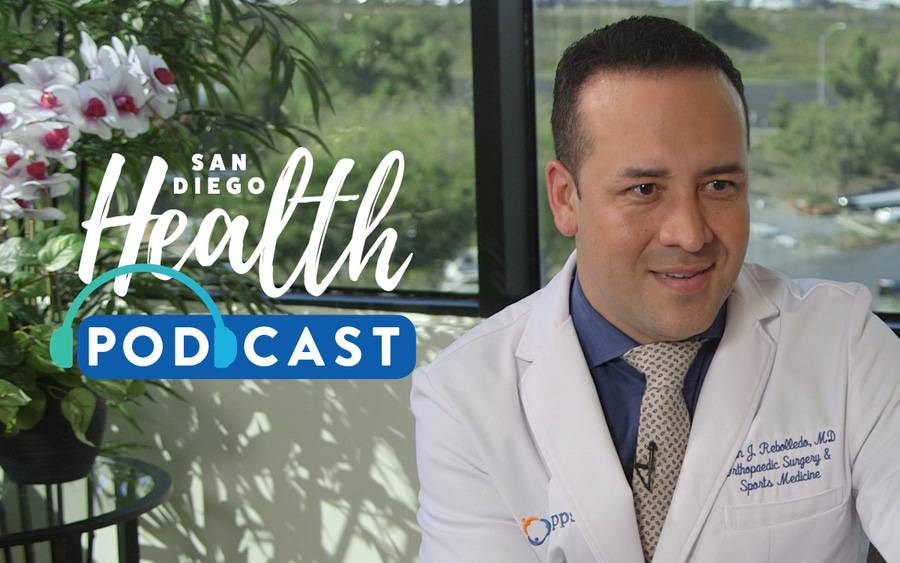Hip Arthroscopy for Hip Impingement (podcast)
Sports medicine doctor discusses hip procedure for active adults

Dr. Brian Rebolledo, Orthopedics, Scripps Clinic
Sports medicine doctor discusses hip procedure for active adults
Dancers, runners, soccer, players, and weekend warriors—almost any type of athlete can experience hip pain that can keep them from doing what they love. In the past, a hip replacement was the go-to solution, but there’s a less invasive option called hip arthroscopy that could be right for patients who need to get back on their feet quickly.
In this episode of San Diego Health, host Susan Taylor and guest Brian Rebolledo, MD, an orthopedic surgeon at Scripps Clinic La Jolla and former assistant team doctor to the San Francisco 49ers, discuss arthroscopic surgery, how it’s performed, and who’s a candidate.
Dr. Rebolledo is one of just a handful of San Diego doctors who perform hip arthroscopy, though it’s the fastest growing segment of sports medicine. Scripps is also one of the few on the West Coast to use a new technology called a postless distractor, which can prevent surgery-related numbness.
Listen to the episode on who is a candidate for hip arthroscopy
Listen to the episode on who is a candidate for hip arthroscopy
Podcast highlights
Watch the San Diego Health video about hip arthroscopy
Watch the San Diego Health video on hip arthroscopy with host Susan Taylor and guest Brian Rebolledo, MD, orthopedic surgeon.